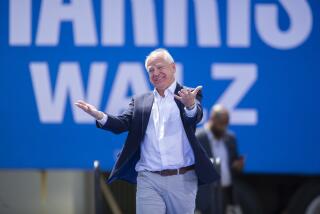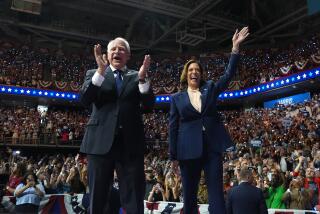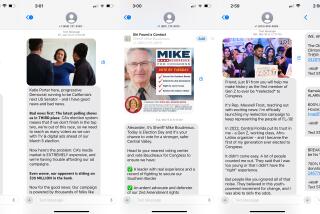Plugged-in candidates
PRESIDENTIAL WANNABES from Alaska to Connecticut are testing a new campaign theorem: All politics is social.
Following the trail blazed by Howard Dean in 2003, at least five of the nine would-be Democratic nominees are incorporating MySpace, Facebook and other social networks into their campaigns. In fact, many are taking a shotgun approach to the Internet, posting links to an array of sites in the hope of spreading buzz about their candidacy to the far corners of the World Wide Web, if not the world itself.
New Mexico Gov. Bill Richardson’s site, for instance, directs visitors to the candidate’s pages on four social networks, including MySpace, where they can find snapshots of more than 450 of his “friends.” Sen. Chris Dodd of Connecticut, in addition to lining up “friends” on MySpace and Facebook, is trying to create a conversation of sorts through videos posted on YouTube (no takers so far). And former North Carolina senator and vice presidential candidate John Edwards, who has racked up a party-leading 10,000 MySpace “friends,” is deploying a customized social network, dubbed OneCorps, to mobilize supporters behind a series of projects in their communities.
The nine Republicans in the race are taking a more buttoned-down approach. Their sites include no links to social networks, viral video outlets or other sites outside the candidate’s control. Instead, they focus on the meat-and-potatoes of campaigning -- raising money and manpower.
That’s not surprising, given the GOP’s knack for campaign discipline. When candidates embrace sites such as MySpace and YouTube, they sacrifice some discipline and control in exchange for energy, creativity and a network to distribute their message for free. The obvious risk is that someone in the loose-knit confederation will do something that embarrasses the candidate.
Perhaps that’s why the Democrats’ best-known candidates are avoiding social networks and using more conventional online tools to recruit supporters and dollars. New York Sen. Hillary Rodham Clinton, for instance, has invited the public to post blog entries on her site, and she’s done three question-and-answer sessions online. But these interactions, like everything else on the site, are carefully managed by the campaign.
Still, in the era of YouTube and cellphone video, candidates have less control over their image and message than ever before. Over the next year and a half, we’ll see whether the Internet’s social tools can make a candidate as well as it can break one.
More to Read
Get the L.A. Times Politics newsletter
Deeply reported insights into legislation, politics and policy from Sacramento, Washington and beyond. In your inbox three times per week.
You may occasionally receive promotional content from the Los Angeles Times.










